Abstract:Laser manufacturing application is the main direction of laser industry application.Power beam processing represented by laser processing is an indispensable technology in the aeronautical industry.In this paper,the structural requirements and material development of various generations of military aircraft is summarized,the challenges and development trend of military aircraft structural parts manufacturing is analyzed and the application status of laser processing technology in titanium alloy aviation structural parts manufacturing is introduced.Laser welding technology is mainly used for the weld‐ ing of skin and truss and the welding of abdominal fins and wing flaps.Laser additive manufacturing is mainly used for the rapid manufacturing of complex titanium alloy body structural parts,and the application in the near future is prospected. Compared with traditional titanium alloy processing technology,laser welding technology and laser melting deposition technology can realize large-scale and integrated manufacturing of structural parts.Laser selective melting technology can real‐ ize the manufacture of complex topological structural parts.These manufacturing technologies can effectively reduce the weight of the body,increase the fatigue life of the body,improve the utilization rate of materials,and reduce manufacturing costs;finally,combined with the current international background and the requirements of the new era,the development trend of laser processing equipment in the manufacturing of titanium alloy aviation structural parts is prospected.The multi‐ functional complete system,intelligent processing process,efficient supporting equipment and independent core components will enhance the core competitiveness of China's high-end laser processing equipment and help the manufacturing of titanium alloy aviation structural parts.
Keywords:aeronautic structure;laser welding echnology;laser additive manufacturing;titanium alloy

0 Preface
As an advanced processing method, laser processing technology plays an increasingly important role in modern aerospace, national defense and national construction. Especially in the field of titanium alloy processing, after 2000, with the continuous improvement of the quality of high-power lasers, the application of laser welding and laser additive manufacturing has become more and more extensive. Based on the research of laser processing technology at home and abroad, this paper summarizes and analyzes the application status of laser welding and laser additive manufacturing in the processing of titanium alloy aviation structural parts. With the continuous development of aviation structural parts to large-scale integration, configuration topology, and structural function integration, the application scenarios of laser processing technology in the field of titanium alloy structural parts processing will be more extensive in the future. At the same time, it also puts forward higher requirements for future titanium alloy laser processing equipment. High-end laser manufacturing equipment that is not subject to humans will be the core competitiveness of titanium alloy aviation structural parts processing.
1 Challenges and development trend of military structural parts manufacturing
-
- Structural requirements and material development of each generation of military aircraft
A generation of military aircraft, a generation of materials [1]. The first generation aircraft mainly met the requirements of high subsonic flight, emphasizing the yield strength, tensile strength, plasticity, and impact toughness of structural components, mainly using steel frames and wooden materials; The second generation aircraft mainly meets the needs of high-altitude, high-speed, and close range combat, emphasizing the fatigue performance of key parts, and extensively uses aluminum alloys and steel; The third generation aircraft mainly meets the requirements of high subsonic maneuverability. The materials in key parts are required to have high Damage tolerance performance, low crack growth rate and fracture toughness. A large number of lightweight high-performance materials are required to be applied. On the basis of aluminum alloy and steel, the use of titanium alloy and composite materials is increased; The fourth generation aircraft mainly emphasizes stealth performance and long life cycle, emphasizing the durability design of the aircraft. The main materials are similar to the third generation aircraft, but titanium alloy and composite materials account for a larger proportion; The fifth generation aircraft needs to possess the characteristics of high intelligence, high collaboration, and high-speed flight, with higher requirements for structural strength, as well as the application of a large number of thermal protection materials and high-temperature resistant alloys.
-
- Challenges faced by military structural parts manufacturing
- Weight loss and longevity increase
- Challenges faced by military structural parts manufacturing
The body structure is one of the key factors that determine the performance index of military aircraft. For half a century, the structure technology has been developing, and the structure form has tended to be ' classic ' [ 2 ]. As shown in Table 1, the percentage of the structural weight of the airframe of each generation of foreign fighters to the total weight of the whole aircraft is decreasing, and the demand for fatigue life of the airframe is increasing. However, compared with the ideal structural weight, F35A is 640 kg overweight and F35B is 900 kg overweight. Recently, the United States has invested USD 350 million to improve the anti-fatigue structure of 162 four-generation aircraft. Reducing weight and increasing life are still the main challenges in the manufacturing of military structural parts. 1.2.2 Low cost, rapid manufacturing Rapid manufacturing and low cost manufacturing are warplane industries.
Table 1 Comparison of structural weight and service life of different generations
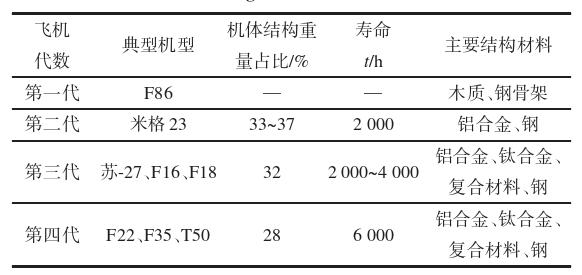
-
-
- Low cost, rapid manufacturing
-
Rapid manufacturing and low-cost manufacturing are the core of the industrial production of fighter jets. The existing manufacturing process for structural components has extremely low material utilization, with a material removal rate of over 90% for some structural components; There are many processing procedures and long production cycles for complex structural components. Simplifying manufacturing processes, improving processing efficiency, and improving raw material utilization not only meet the needs of the new situation of national "dual carbon" development, but also meet the fundamental interests of the aviation manufacturing industry.
-
- The development trend of military structural parts manufacturing
- Large-scale and integrated structure
- The development trend of military structural parts manufacturing
At present, the body structure is connected by connectors in a small way [ 3 ], which directly leads to the overweight of the body structure, many fatigue weak links and frequent cracking. For aircraft structural parts, the traditional assembly structure is integrated and manufactured, which not only reduces the number of structural parts and connectors, but also effectively eliminates the separation surface, reduces redundant structures, slows down stress concentration, and reduces fatigue weaknesses. The large-scale and integrated design of the structure breaks through the design limit of the original body, which can reduce the weight of the body structure by more than 20 %, and the mechanical weakness is expected to be reduced by more than 30 %, effectively improving the life of the body. At the same time, the integrated structure simplifies the body assembly tooling and process, and the body manufacturing cycle is expected to be shortened by more than 30 %.
-
-
- Topologicalization of structural configuration
-
The bionic topological configuration is used to replace the traditional longitudinal and transverse stiffened plate configuration. The material is arranged according to the force transmission path and functional requirements, and the material can be arranged to the optimal force transmission path to achieve ' no redundancy ' design, further optimize the structural design and achieve weight reduction. Figure 1 shows the aircraft structural parts before and after topology optimization. The weight of the parts is reduced from 0.89 kg to 0.35 kg, and the weight is reduced by 60.6 %.
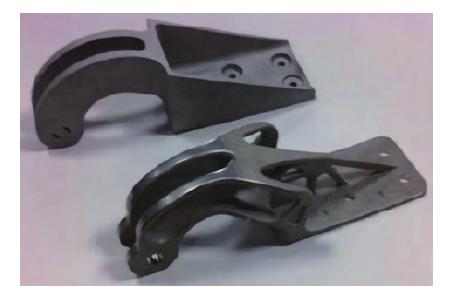
Fig.1 Topologically optimized parts
-
-
- Integration of structure and function
-
At present, the structural system and functional system of military aircraft are independent. In the future, the military will integrate the functional system into the structure, cancel the redundancy of the functional system, and integrate the functional structure, such as the integration of thermal protection materials, microstructure and structural configuration, so as to achieve the purpose of heat resistance and heat protection, and further achieve weight loss. The typical heat-resistant and load-bearing integrated structure is shown in Figure 2.
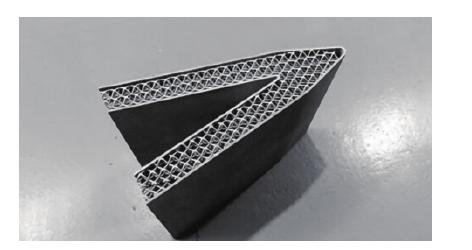
Fig.2 Heat proof and load-bearing integrated structure
2 Application status of laser processing technology in the manufacturing of titanium alloy aviation structural components
2.1 Laser welding technology
There are two main advantages of laser welding in the manufacture of aviation structural parts [ 4-5 ].Firstly, welding replaces traditional riveting, which saves a lot of rivets and can effectively reduce weight. Secondly, the strength of the whole weld is better than that of multiple rivet connections. As shown in Fig.3, the strength of the titanium alloy weld and its heat affected zone is greater than that of the base metal. The strength of the whole weld is very good, which can effectively increase the fatigue life of the body.
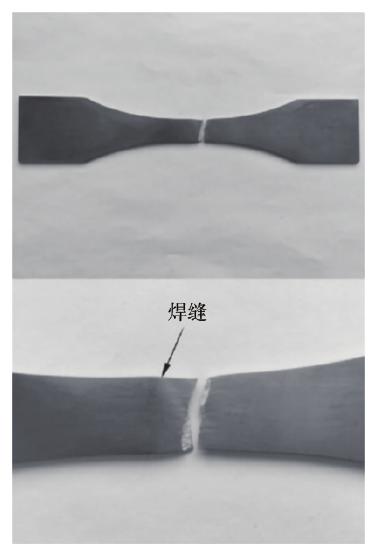
Fig.3 Tensile fracture location of titanium alloy laser welding
At present, the most widely used and mature is the T-joint double beam Laser beam welding technology, which was first applied by Airbus to the lower fuselage skin welding of A318 series aircraft in 2000 (see Figure 4). It is recognized as a technological revolution in the field of large passenger aircraft manufacturing in the past decade, changing the traditional concept that welding technology is not suitable for aircraft manufacturing. Systematic research has been carried out on laser welding of TC4 titanium alloy and TA15 titanium alloy in China [6-10]. Laser welding has been applied to the manufacturing of titanium alloy web fins, welding of titanium alloy skin, welding of T-joints between wallboard and stringer of some aircraft models in China, and the supporting manufacturing equipment is also relatively mature. Figure 5 shows the dual beam synchronous welding equipment of COMAC, used for the manufacturing of a domestic passenger aircraft. In addition, Beijing Aeronautical Manufacturing Engineering Research Institute has applied laser welding technology to the manufacture of titanium alloy load-bearing components of engines.
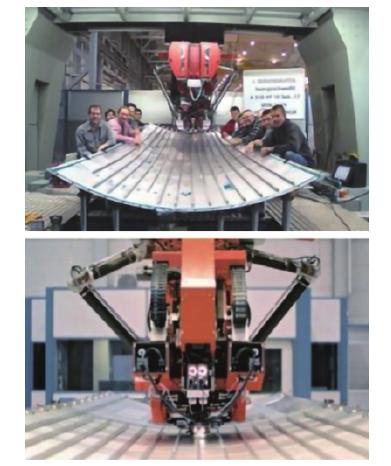
Fig.4 Lower fuselage welding of Airbus A318
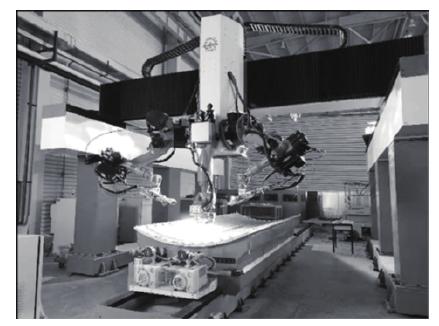
Fig.5 Double beam welding equipment of COMAC
The laser welding technology will be further applied to titanium alloy load-bearing structures, especially in situ laser welding of titanium alloys. In situ welding technology belongs to the field of near net forming technology, which refers to the forming technology of mechanical components that require only a small amount of processing or no further processing after the parts are formed. The in-situ welding technology is the first proposed and applied by the United States on F-22 fighter jets. It utilizes high-energy beams to weld the assembly body without the need for secondary mechanical processing after welding, achieving the coordination and unity of the in-situ welding process and assembly technology of aircraft skeleton parts, replacing traditional riveting, greatly reducing weight and shortening the component manufacturing cycle. In the development phase of the F-22, due to the limitations of laser power at that time, a large number of titanium alloy rear fuselage were welded by electron beams. Firstly, 3-4 segments are longitudinally welded to form a box shaped segment, followed by a box mounted segment welded into a frame, and finally welded into an overall cabin segment, as shown in Figure 6. The total length of the titanium alloy weld is about 9 meters, and the mass is reduced by 182 kg compared to the mechanical connection [11]. At present, there is no engineering application of in-situ welding technology in domestic aviation manufacturing field, and the application of in-situ laser welding of titanium alloy structural parts will be a valuable research direction in the future.
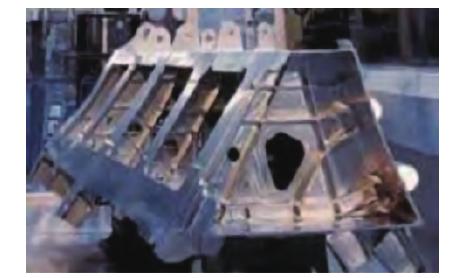
Fig.6 Integral welding structures of F22
In the future, the development trend of laser welding in the field of aviation structural parts manufacturing is to weld more complex body structures and new materials to further reduce body weight and increase life. In addition, the value of aviation structural parts is high, and it is very important to ensure the processing quality. The challenges brought by this mainly include the following aspects :
( 1 ) The accessibility expansion of laser welded joints.
The positioning and clamping tooling of the complex titanium alloy frame structure are interlaced, which greatly interferes with the accessibility of the laser welded joint. On the one hand, it is necessary to reasonably plan the welding path, optimize the tooling design, and maintain the maximum openness of the operating space. On the other hand, it is necessary to carry out the research and development of special welding joints, which have the elements of miniaturization, remote welding, adjustable end pose and so on.
( 2 ) Deformation control.
Deformation control includes welding deformation control and heat treatment deformation control. It is necessary to further carry out the welding process test of the welding object, complete the best welding strategy matching, realize the optimal solution of welding deformation control and ensure the welding reliability. It is necessary to further study the deformation mechanism of heat treatment, and design a reasonable conformal tooling and heat treatment strategy to realize the heat treatment deformation control of complex components. In addition, it is necessary to explore new heat treatment methods, such as ultrasonic impact, laser shock and other special processes to eliminate welding stress.
( 3 ) New material welding.
In view of the demand for temperature resistant materials for future ultra-high speed aircraft, further research on laser welding process of high-temperature titanium alloy and thermoplastic composite materials is needed, and mechanical properties and fatigue properties are assessed to provide support for the subsequent engineering application of new materials.
2.2 Laser additive manufacturing technology
Selective Laser Melting ( SLM ) and Laser Melting Deposition ( LMD ) are the main laser additive manufacturing processes for titanium alloys [ 12 ]. Aeronautical structural parts have the characteristics of multi-variety and small batch. The more complex the structure is, the more obvious the cost and efficiency advantages of additive manufacturing are compared with traditional manufacturing methods.
SLM technology has a small layer thickness ( 30 ~ 60μm ), which can directly and rapidly form terminal metal products with high dimensional accuracy and good surface quality. It can realize efficient and dense forming of any complex parts, especially suitable for complex parts with complex special-shaped structures that cannot be manufactured by traditional methods.
General Electric Company focuses on additive manufacturing to reduce its engine manufacturing costs, and has completed batch manufacturing of a large number of parts using SLM technology. Figure 7 shows the aero-engine fuel nozzle, which integrates 20 parts into one part for printing, reduces the weight by 25 %, and has realized the batch manufacturing of tens of thousands of parts. In addition, Airbus applies structural optimization based on finite element analysis to the redesign of existing components, and uses SLM technology to achieve significant weight reduction, as shown in Figure 8.
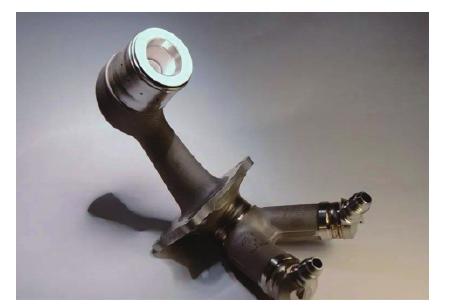
Fig.7 Aero-engine Fuel nozzle of GE
The future military aircraft will have the characteristics of ultra-high-speed flight. Thermal protection technology is one of the key technologies for future aircraft structural components. The heat-resistant bearing structure has the characteristics of porous and lattice, and the internal needs micro-channels to complete active heat dissipation. The traditional process of such structures cannot complete processing. The aero-engine blade with built-in flow channel designed by General Aviation is shown in Figure 9, and the metal multi-functional lattice structure for aircraft is shown in Figure 10, which can realize the integration of structural load-bearing, thermal protection, stealth and other functions. The traditional process of this kind of structure can not complete the processing, and the SLM technology can meet the relevant manufacturing requirements.
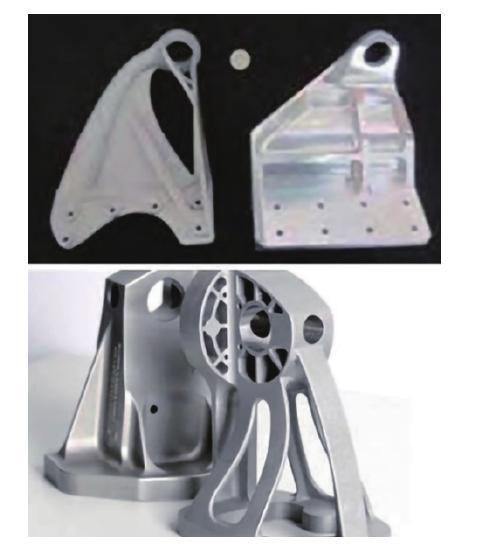
Fig.8 Component re-design process of Airbus
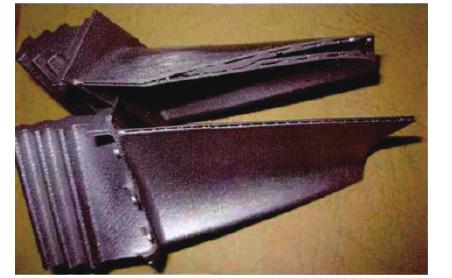
Fig.9 Blade structure with built-in runner
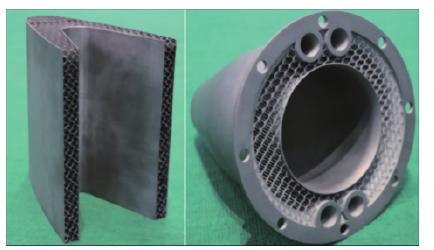
Fig.10 Metal multifunctional lattice structure
The application of laser selective melting forming of titanium alloy heat-resistant and load-bearing integrated structure will be a valuable research direction in the future.
In the field of SLM equipment manufacturing, many units represented by Optomec in the United States, EOS in Germany, Platinum in Xi 'an and Yuchen in Nanjing have developed industrial-grade SLM equipment. The main characteristics of typical SLM equipment at home and abroad are shown in table 2.
Table 2 Typical SLM equipment at home and abroad
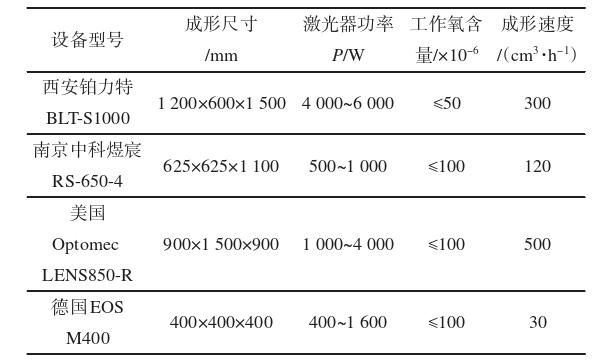
Among them, Xi'an Platinum Additive Technology Co., Ltd. launched the 12 laser SLM 3D printer BLT S1000 in May 2022, which is currently at the leading level in China, as shown in Figure 11. Its forming size can reach 1200 mm × 600 mm × 1500 mm, can achieve integrated molding of large and complex structural components, with a maximum molding rate of 300 cm3/h. Improving the processing efficiency of powder spreading equipment will still be a highly valuable research direction in the future.
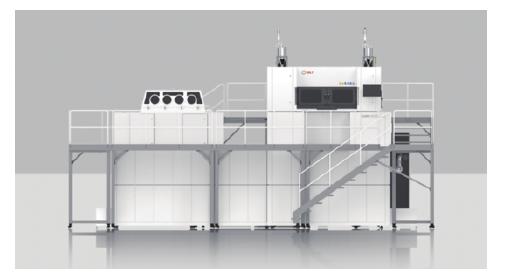
Fig.11 BLT-S1000
Laser direct deposition technology (LMD) has the characteristics of high material utilization, small machining volume, and short manufacturing cycle. The process characteristics of coaxial powder feeding determine that its forming size is not limited, and it can achieve composite and gradient manufacturing of multiple materials on the same component. It is suitable for the processing and manufacturing of large structural components or functional parts with less complex structures. LMD technology has been widely applied in the aerospace field both domestically and internationally, such as Boeing, Airbus, Lockheed Martin, GE Aviation, and other world-renowned airlines that are vigorously developing their own laser direct deposition technology [13]. As shown in Figure 12, a large-scale laser direct deposition metal additive manufacturing equipment developed by Beihang University can manufacture large-scale complex components for Comac and military aircraft projects, including titanium fuselage framework and high-strength landing gear. Professor Wang Huaming's team from Beihang University has developed key components such as titanium alloy reinforced frames for the main load-bearing aircraft, which have been installed and applied on various aircraft models, including the C919 large passenger aircraft. Beihang has applied LMD technology to manufacture large titanium alloy main load-bearing components for aircraft, as shown in Figure 13. Northwestern Polytechnical University successfully trial produced C919 wing rib components using LMD technology, as shown in Figure 14.
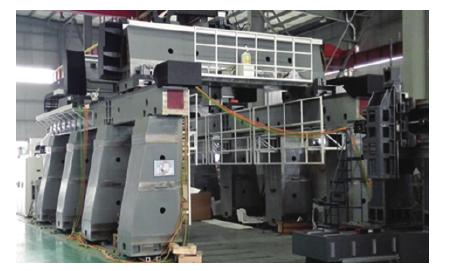
Fig.12 Large laser additive manufacturing equipment system
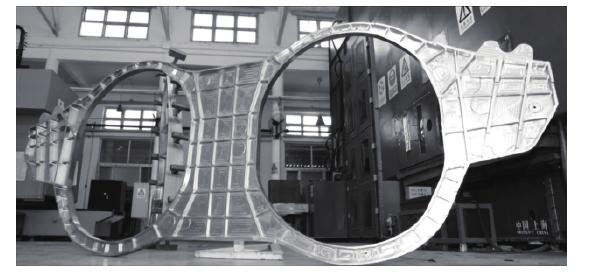
Fig.13 Large titanium alloy main bearing structure
In the field of LMD equipment manufacturing, many enterprises represented by EFESTO in the United States, EOS in Germany, Platinum Ritter in Xi 'an, Yuchen in Nanjing, and Xinjinghe Laser have developed industrial-grade LMD equipment. The main parameters of typical LMD equipment at home and abroad are shown in table 3.
Table 3 Typical LMD equipment at home and abroad

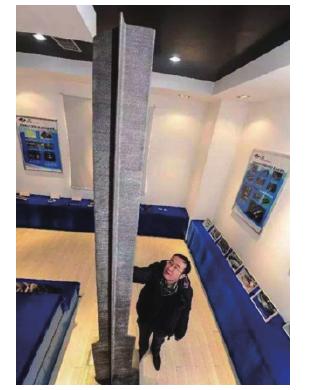
Fig.14 The long flange of C919 central wing
The performance indicators of the large-scale intelligent dual beam equipment developed by Nanjing Zhongke Yuchen have reached international and domestic advanced levels, as shown in Figure 15. It is the first time in the world to propose the use of dual megawatt laser synchronous powder feeding printing technology, with a deposition speed of 700 cm3/h and a rigid forming size of 4 meters for the equipment × 3.5 m × 3 meters, flexible forming size up to 13 meters × 3.5 m × 3 meters, the processing capacity covers all categories of current aviation titanium alloy main load-bearing structural components, meeting the manufacturing needs of future models and special components. In addition, AVIC Chengfei Group has also developed large-scale LMD coaxial powder feeding equipment and achieved engineering applications in aircraft additive manufacturing. Reducing the cost of equipment processing and usage will be the future research direction of LMD equipment. The stress control and deformation cracking of large components are key challenges faced by LMD technology.
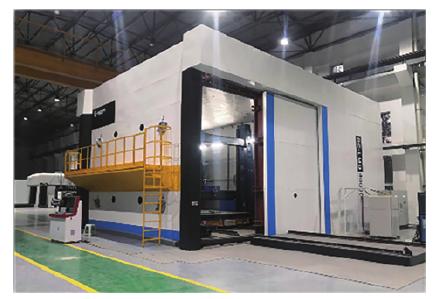
Fig.15 LDM 4000
The future development trend of laser additive manufacturing in the field of aviation structural parts manufacturing will be to further broaden the application scope and improve the mechanical properties of parts. The processing objects will be further expanded from non-load-bearing parts and secondary load-bearing parts to main load-bearing parts. At the same time, further improving the maturity of the processing technology and reducing the processing cost are more conducive to the engineering application of the technology. The resulting challenges mainly include the following aspects :
( 1 ) Improve the forward design ability.
At present, additive manufacturing technology is mainly a substitute for traditional casting and forging technologies, and has not fully utilized its advantages of high design freedom. It is necessary to further enhance the design ability of structural components, integrate additive ideas in design, and achieve disruptive innovation in structural design from the source through the concept of forward design.
- Improve the mechanical properties of the parts.
One of the key requirements for laser additive manufacturing is to obtain the required mechanical properties, which require further optimization of the printing process, reduction of deformation, avoidance of cracking, and improvement of mechanical properties. On the one hand, it is necessary to conduct a large number of basic experiments and establish a process database; On the other hand, it is necessary to develop reliable predictive process models, such as process thermal models, microstructure prediction models, and mechanical performance prediction models, to improve the reliability of the machining process.
- Establish a sound basic performance data system.
As a rapidly developing high-tech, additive manufacturing still lacks sufficient data reserves in raw materials, processes, post-processing, and organizational performance databases. The industry needs to work together to improve the basic performance data system for laser additive manufacturing of metal materials, and jointly develop specifications for additive manufacturing powder raw materials, process, and other aspects.
3 Prospects for the Application of Laser Processing Equipment in the Manufacturing of Titanium Alloy Aerospace Structural Parts
With the increasing application of titanium alloy laser processing technology in the manufacture of aviation structural parts in China, titanium alloy laser processing equipment is also facing pressure and challenges, which need to be further improved and developed to enhance the competitiveness of laser processing equipment.
3.1 Multifunctionalization of complete system
Efficient and low-cost manufacturing and near net forming will be the future development direction of titanium alloy aviation structural component manufacturing. The aviation industry belongs to typical discrete manufacturing, and most of the current processes and processing equipment only have a single processing function. Parts are rotated at different process nodes, reducing processing efficiency. Single discrete point versatility and simplified process flow require the future development of high-end laser manufacturing integrated systems towards versatility, combining the advantages of laser manufacturing precision and direct near net forming with traditional manufacturing technologies to form the best manufacturing strategy, such as automatic equipment that integrates additive, welding, reduction, and online measurement. At the same time, developing specialized new equipment for in-situ adaptive manufacturing, such as online welding deformation measurement and analysis equipment, online welding porosity detection equipment, and in-situ stress relief equipment, can effectively reduce subsequent processing and testing processes.
3.2 Intelligent machining process
The intelligent laser processing system will effectively improve the processing efficiency, ensure the processing quality and reduce the requirements for operators. Intelligent sensors, digital bus technology and other intelligent components are integrated into laser processing equipment. Through real-time online detection and closed-loop process control of the whole production process, the processing quality, consistency and reproducibility of laser processing are ensured. Such as the intelligent terminal based on visual measurement and laser measurement, the automatic measurement of the gap and step difference of the component assembly is completed to ensure the assembly state and replace the existing manual measurement ; the high-precision remote narrow weld seam tracking end meets the special welding scene requirements of complex shape, complex fixture and poor accessibility of welding end of aviation structural parts. The molten pool monitoring equipment with the whole process monitoring of high temperature processing and combined with AI deep learning function realizes the key process parameters, online real-time monitoring and feedback closed-loop control in the process. In addition, the construction of laser processing knowledge engineering and the formation of laser processing equipment technology management and control platform can also effectively improve the reliability and intelligence of laser processing.
3.3 supporting system efficient
Titanium alloy is very active at high temperature. It is easy to react with hydrogen above 300 °C, oxygen above 600 °C, and nitrogen above 700 °C.It is necessary to apply argon protection. High-quality gas protection measures can effectively guarantee the processing quality of titanium alloy, improve the qualified rate of parts manufacturing and reduce the processing cost. For the traditional protection fixture blowing method, it is necessary to pay attention to the reliability of its protection and reduce the impact on beam accessibility. For the overall sealing protection method, it is necessary to further improve the sealing of the box, optimize the airflow organization of the inert gas replacement and purification process, reduce the establishment time of the inert atmosphere, and improve the processing efficiency.
3.4 Autonomy of core components
After years of unremitting efforts, China 's laser manufacturing equipment has achieved ' from scratch ' and is currently in the stage of ' from scratch to good '. However, some high-end core components are still in a controlled situation. It is urgent to develop domestic lasers with high power and high reliability, and to improve the shortcomings of excessive power attenuation. Research and development of high-power, high-precision, high-reliability domestic laser welding head / print head, online weld pool monitoring device and other core components to enhance the degree of autonomy of high-end laser manufacturing equipment.
4 Conclusion
Taking aviation structural component manufacturing as the background, this paper introduces the challenges and development trends faced by aviation structural component manufacturing, summarizes the application status of laser processing technology in titanium alloy aviation structural component manufacturing, and puts forward relevant suggestions for the future development direction of titanium alloy laser processing complete equipment.
(1) Analyzed the challenges and development directions faced by the manufacturing of military aircraft structural components.
(2) The application status and prospect of laser welding technology and laser additive manufacturing technology in aircraft structural parts manufacturing are introduced, which has guiding value for the application of laser technology in military aircraft structural parts manufacturing.
(3) Based on the consideration of rapid, efficient, and low-cost manufacturing of future military aircraft, direction and development suggestions are provided for the development of titanium alloy laser processing equipment technology in the future.
-
FAQ 1: What are the applications of Titanium Alloy in Aeronautic Structure Manufacturing?
- Describe the importance and wide-ranging applications of Titanium Alloy in the aerospace industry, highlighting its excellent strength-to-weight ratio.
-
FAQ 2: How does Titanium Alloy differ from other metals?
- Explain the advantages of Titanium Alloy compared to traditional metals such as aluminum and steel, including corrosion resistance, high-temperature properties, and mechanical performance.
-
FAQ 3: What role does Laser Processing play in Aeronautic Structure Manufacturing?
- Highlight the significance of Laser Processing technology in aerospace structure manufacturing, covering its applications in cutting, welding, drilling, and how it enhances production efficiency.
-
FAQ 4: What challenges exist in using Titanium Alloy in the aerospace industry?
- Discuss the challenges associated with using Titanium Alloy, including material costs, processing difficulties, and design requirements.
-
FAQ 5: How is the quality and safety of aerospace components ensured?
- Provide insights into the crucial measures taken to ensure the quality and safety of aerospace components, such as quality inspections, compliance standards, and certification processes.
How to Contact Us:
- Visit our website: https://www.nbyichou.com/
- Email us: [email protected]
- Call us/whatsapp: +86 13355741031
- Chat with us: Live chat support available on our website